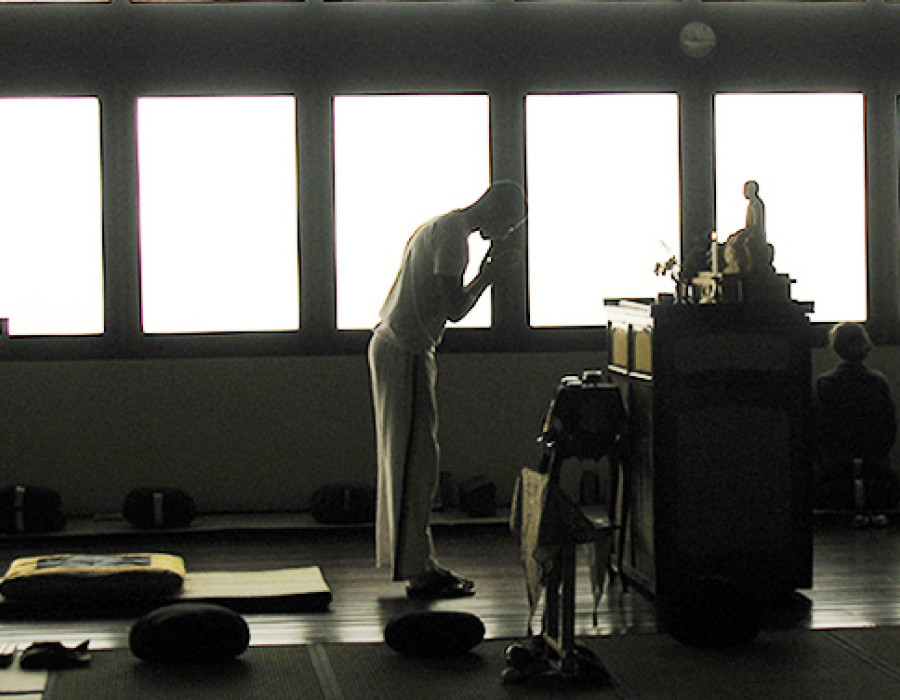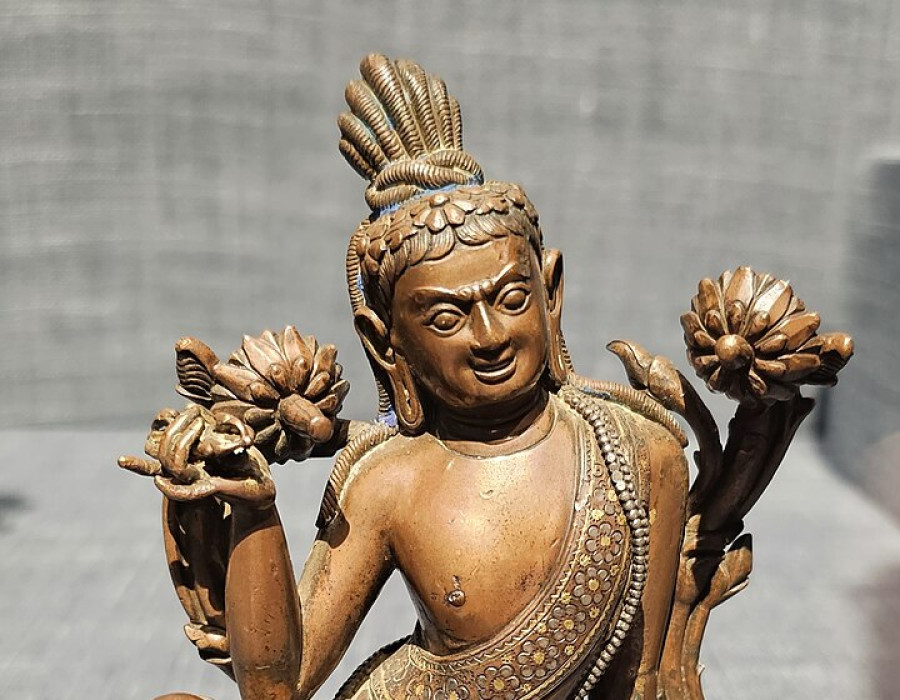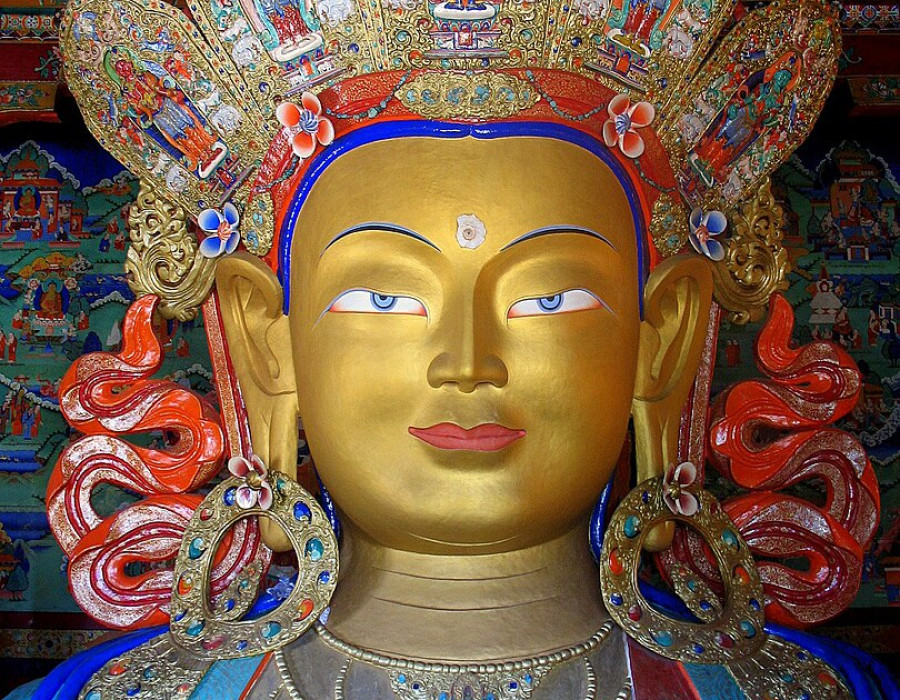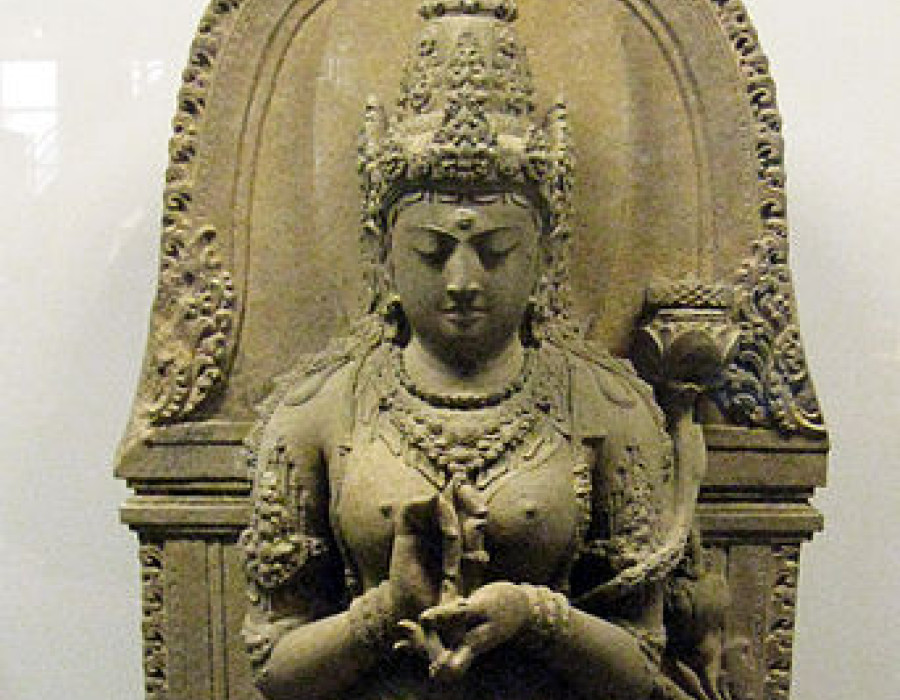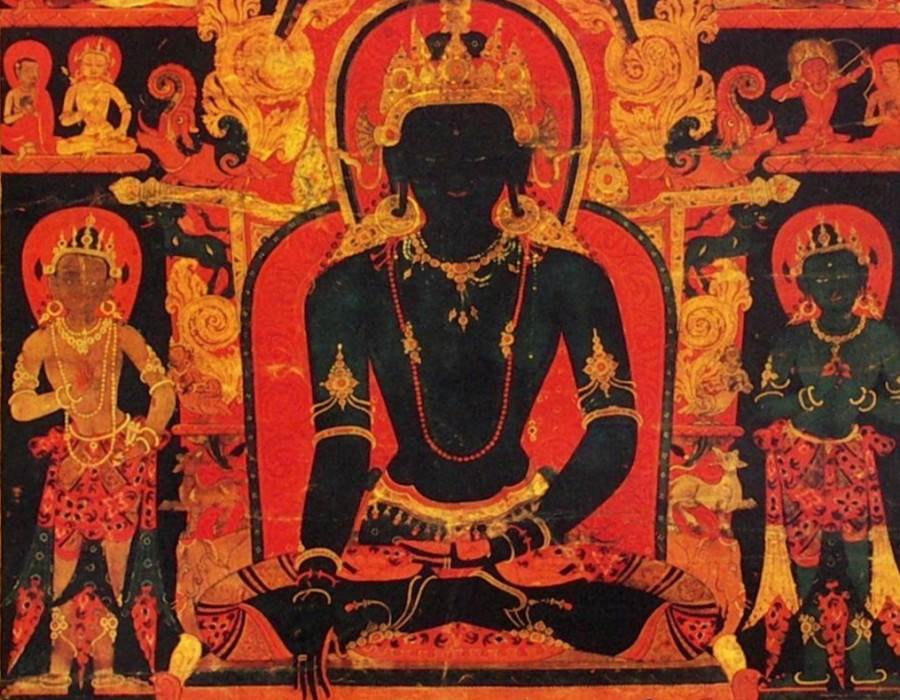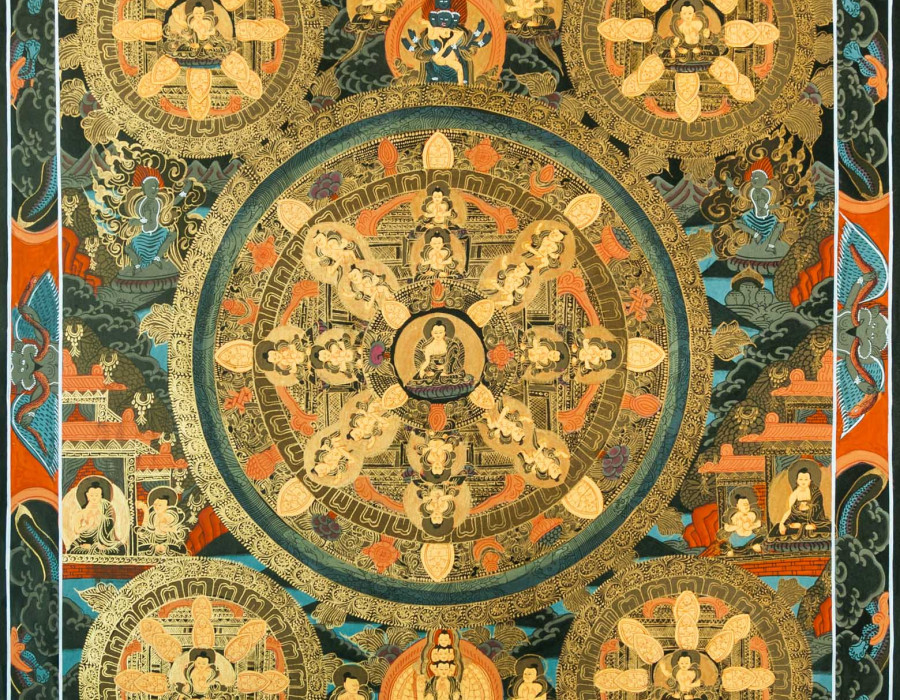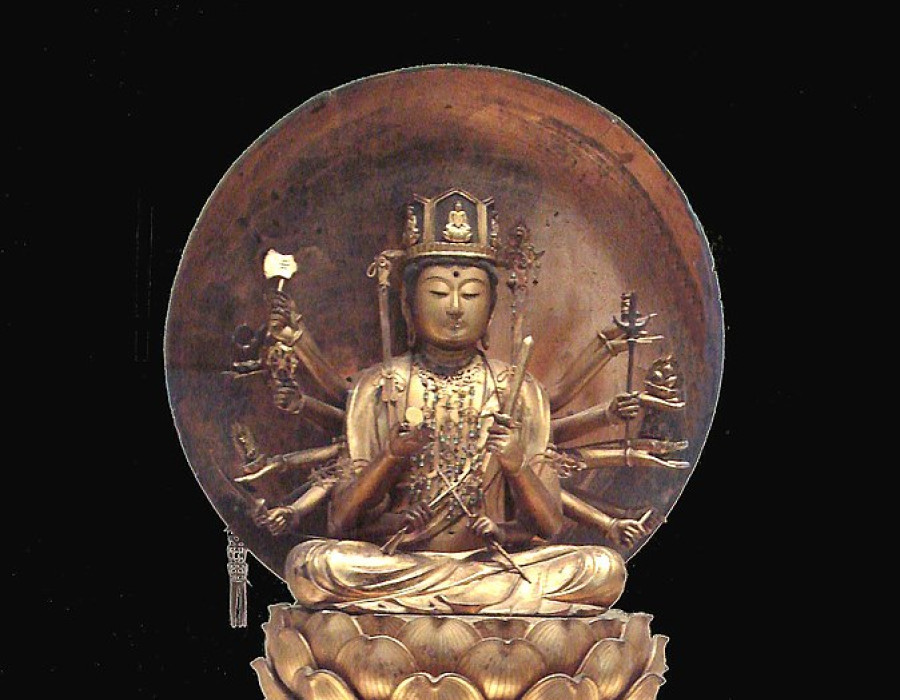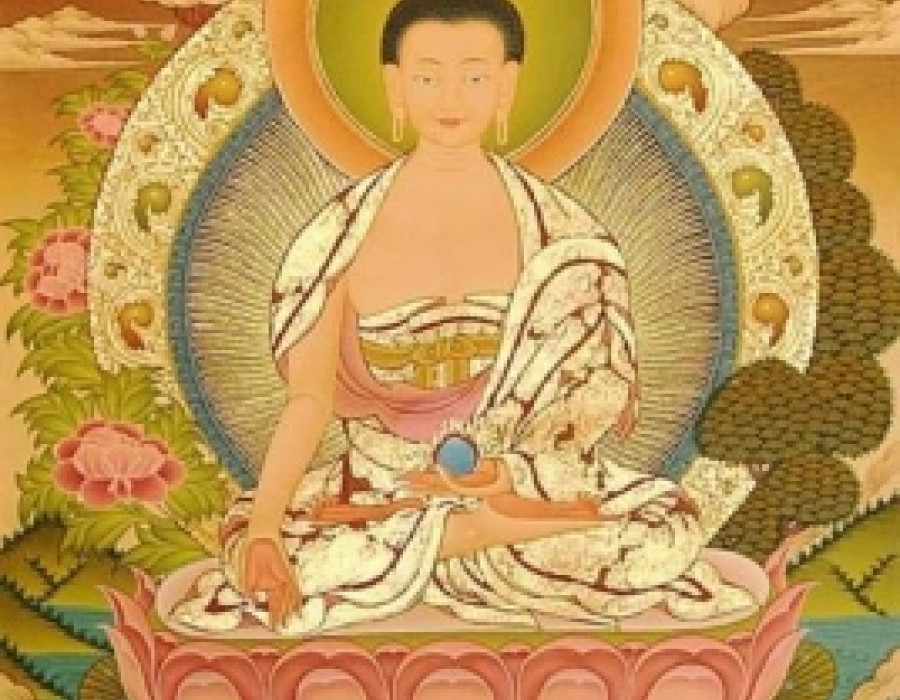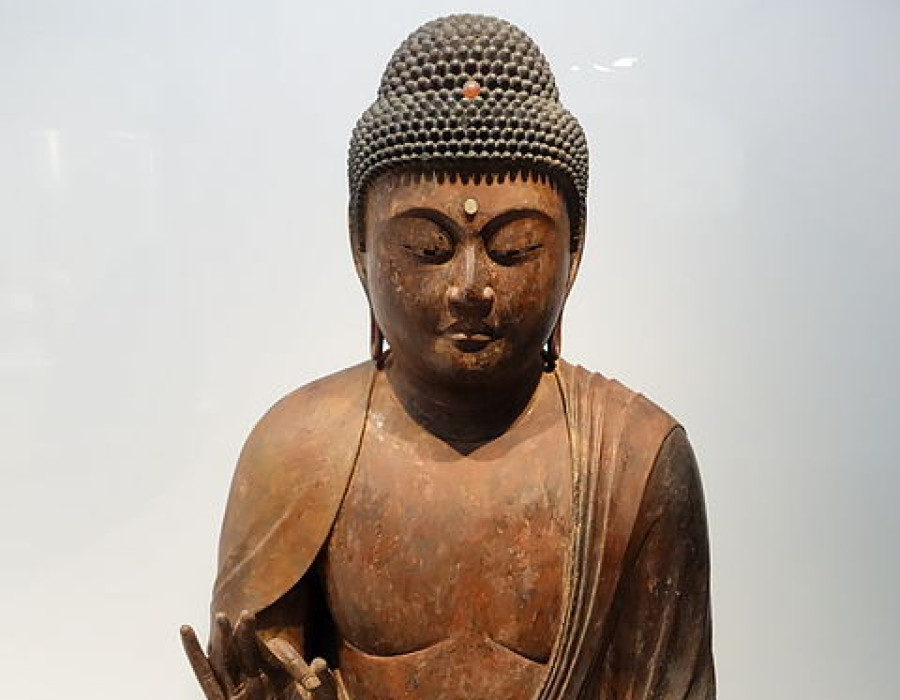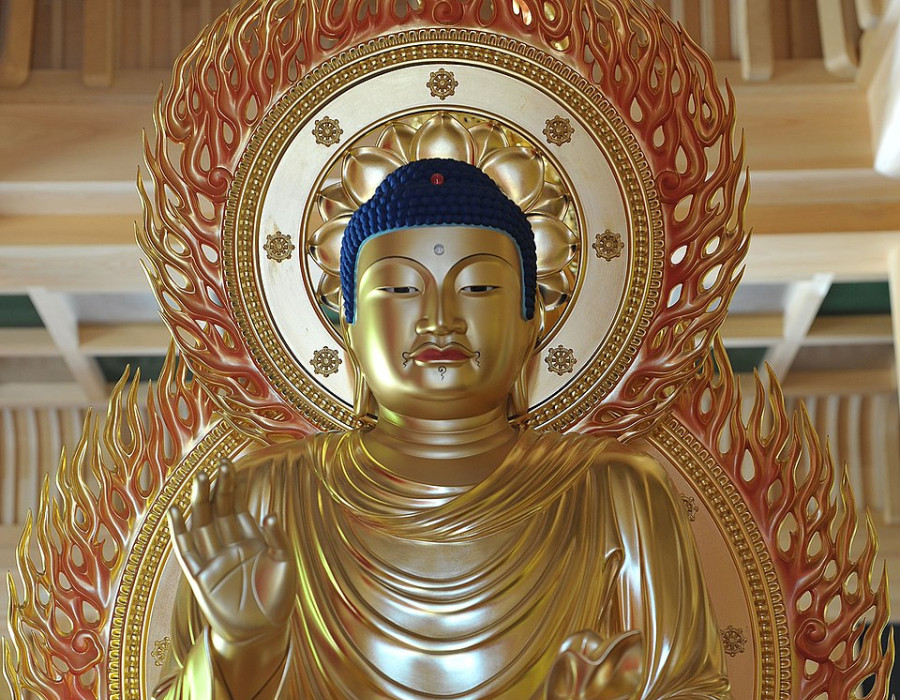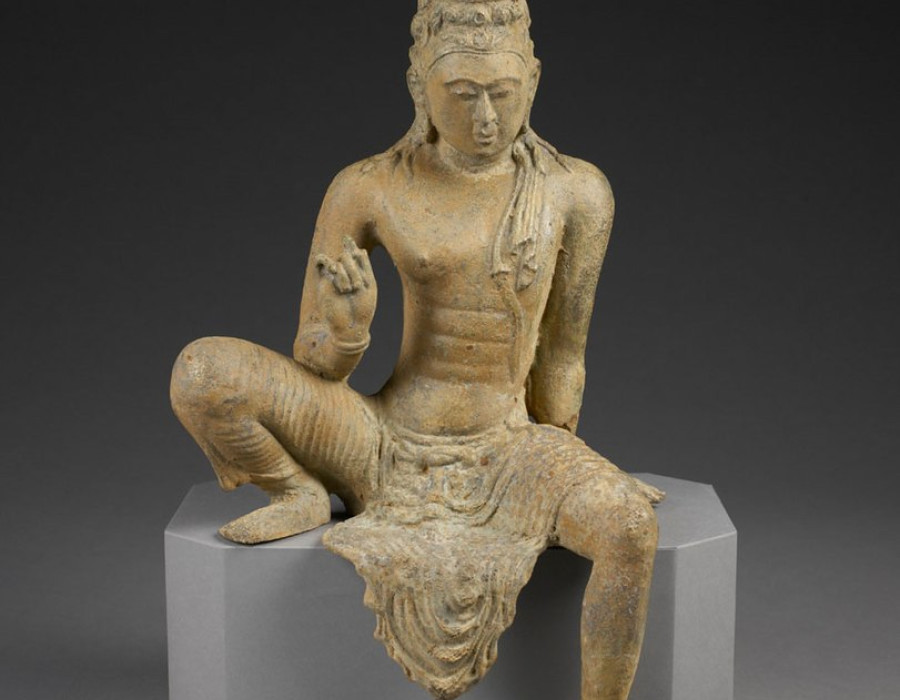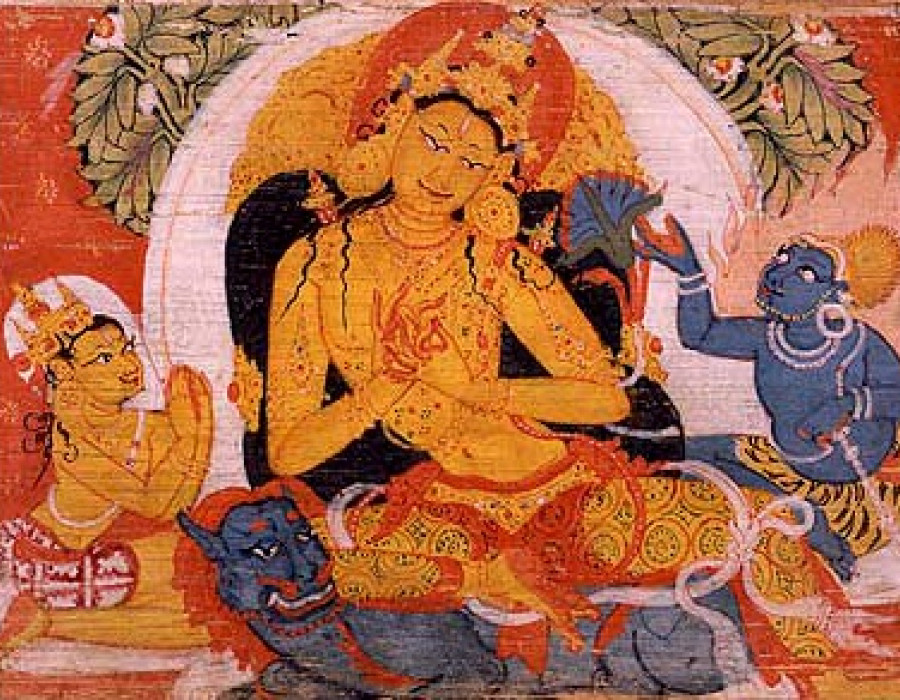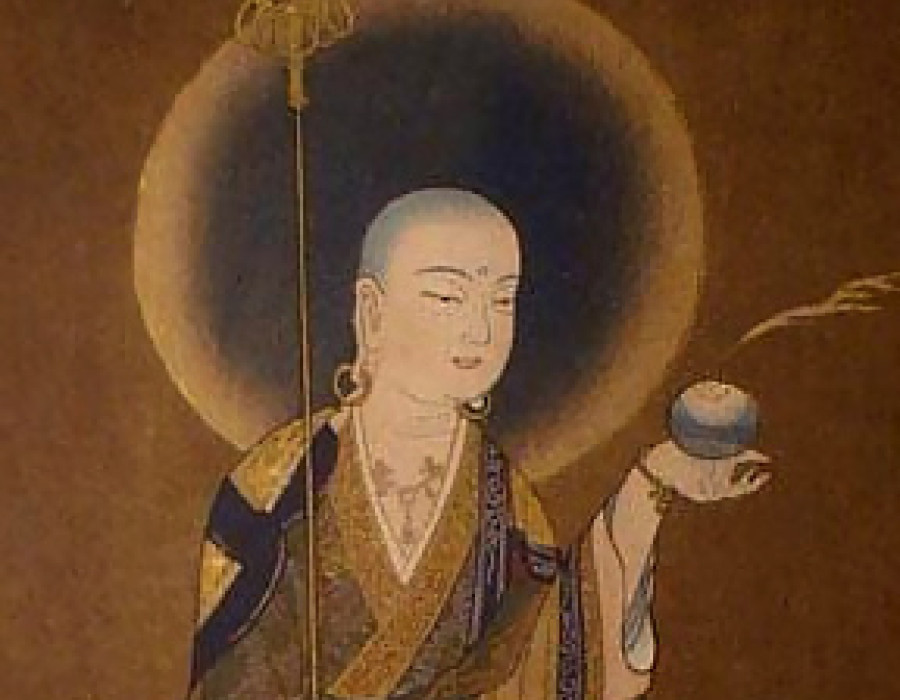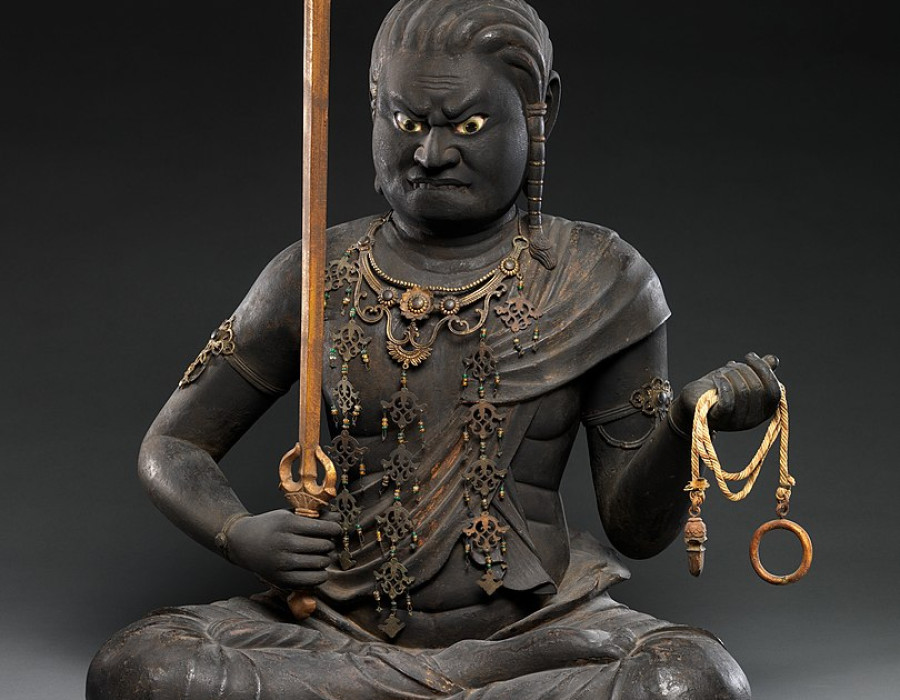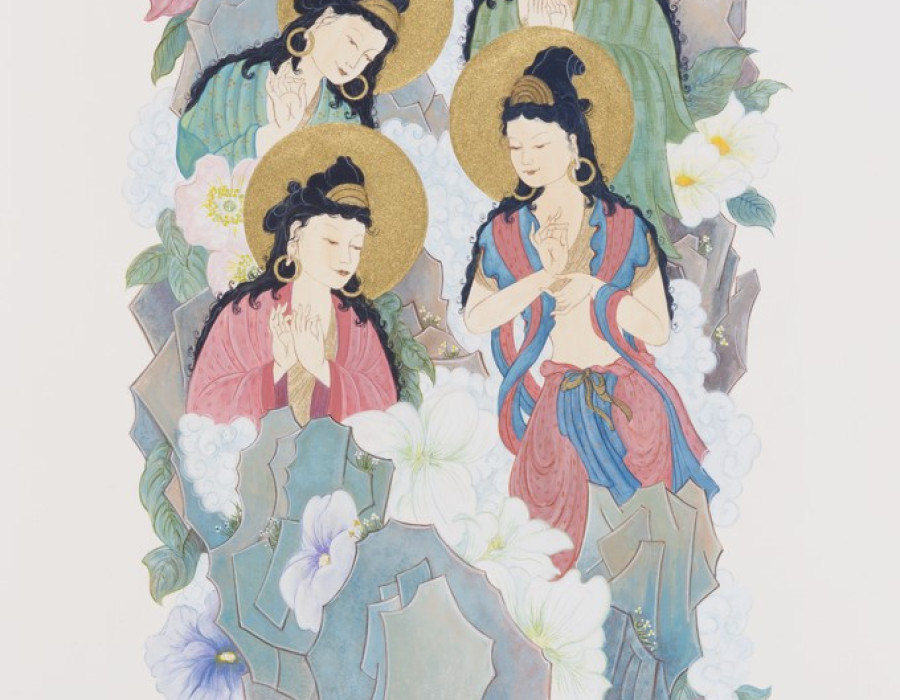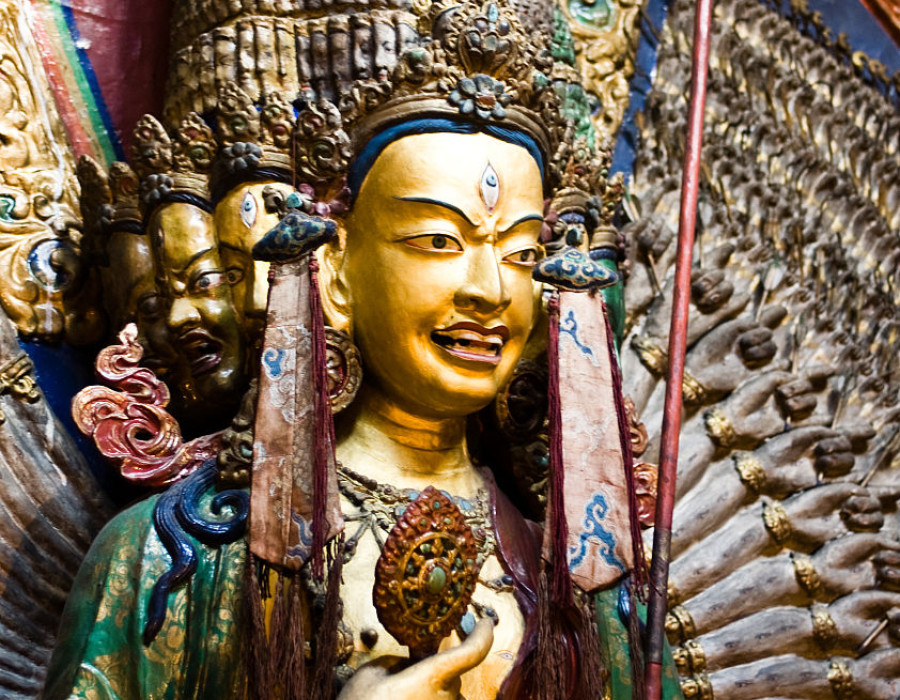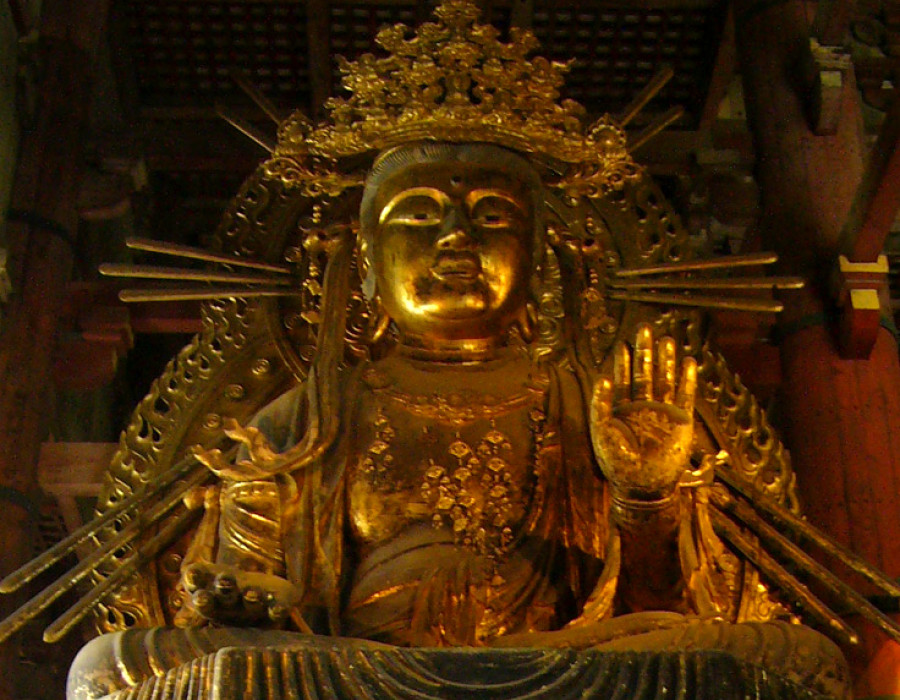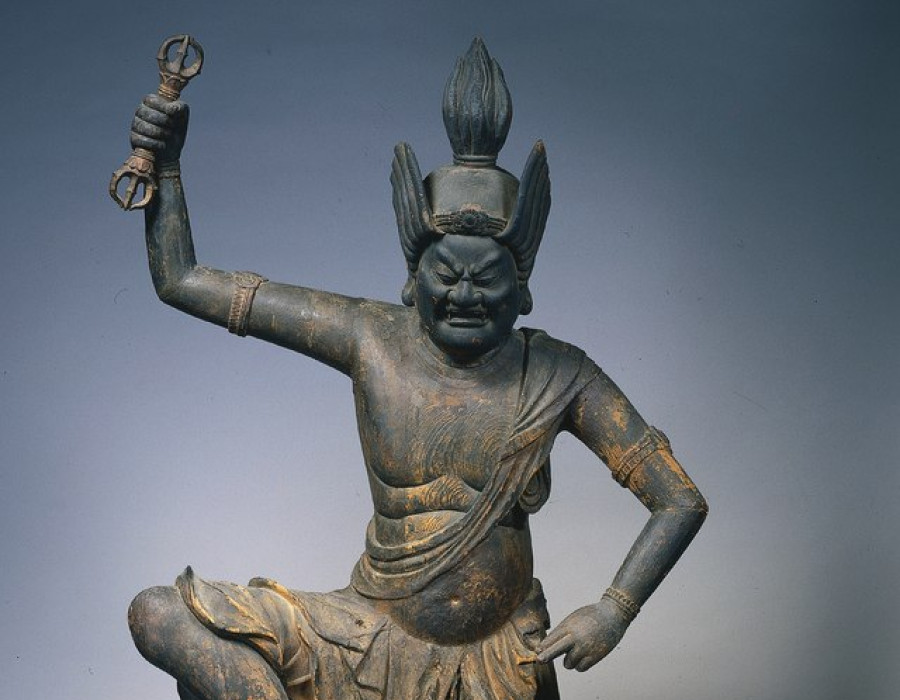
Martin Goodson
The Way of Devotion: An Introduction to Devotional Practices
Western Buddhism places an emphasis on meditation practices, however Eastern Buddhism also has a strong devotional element that can get overlooked in Europe and America. This series explores this side of Buddhist practice.
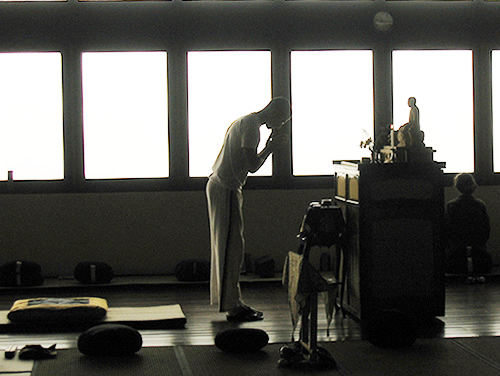
Buddhist offering incense to an image.
By Emerson Ricardo Zamprogno from São Paulo, Brazil - Flavio as jikido offering incense, CC BY-SA 2.0, https://commons.wikimedia.org/w/index.php?curid=55040538
What would the answer be if the average shopper on the High Street were asked what it is that Buddhists do? The answer would probably come back - ‘Meditate?’ For most, if not all, the idea of the meditating monk under a tree sums up what Buddhism is about.
The image of shaven headed monks in saffron, maroon or black robes sitting in lines, eyes semi-closed, sitting cross-legged pretty much sums up a stereotyped idea of what it is that Buddhists ‘do’. However, talking to people from countries such as Sri Lanka, Thailand, Tibet or Japan, where Buddhism has been practiced for centuries, we find that the reality of being a lay Buddhist is quite different. In these countries the overwhelming majority of lay Buddhists have never meditated. Quite a few of them would not be able to tell you much about The Noble Eightfold Path let alone what the Five Skandhas and Eighteen Dhatu consist of.
As a Western convert to Buddhism, I was taken aback when a visiting Japanese Buddhist priest told me that the courses on the teachings of the Buddha, which were put on by The Buddhist Society in London were practically non-existent in the Buddhist temples in Japan.
The Tuesday night seven-week course in Fundamentals of Buddhism at the Society has run for decades and proves to be still the most popular course it puts on for the public, often attracting in the range of 60-80 people for the start of each course that it puts on five times per year.
Buddhism in the West, in many ways, is a very different creature to its Eastern older sibling. Not that we do not share the same teachings: of course we do. Not that we do different meditation practices: we don’t. It’s just that in our Western approach to and fascination with Buddhism the focus is almost exclusively on ‘Enlightenment’ or in Japanese Zen parlance ‘satori’ or ‘kensho’, even for lay-practitioners. However, by contrast, in Thailand, Sri Lanka, Tibet and Japan, lay-Buddhist practice has a large devotional element to it that is absent for many Western converts.
In her study on the portrayal of Buddhism in East and West, academic Sharon Suh sees past colonial influences in setting this agenda.
The Buddhism popularized in the West in the late nineteenth century was mediated through an Orientalist lens that deemed the Buddhism of Asians as a backward, superstitious, overly ritualized tradition and therefore not worthy of emulation. [1]
The Buddhism referred to is that of devotional and ritual practices carried out by lay-practitioners, such as petitionary prayer, veneration of Buddhas and bodhisattvas, making offerings at shrines, using mantras for protection and other ‘magical’ uses.
These ‘irrational’ practices were seen as inferior to the more ‘rational’ meditation practices.
The cultural logic of white supremacy driving Orientalism that determined that the truest and most pure form of Buddhism was in fact the meditative tradition was later popularized in the West through academic scholarship and media that continues to wield its influences today. [1]
In answer to the question of why devotional practices were considered inferior we also have to keep in mind the mindset and world-view of those colonialists. As Charles Allen points out in his book Buddha and the Sahibs: The Men Who Discovered India’s Lost Religion, the British in India were both Protestant and Rationalist. To their eye the austere and simple meditation practices of the Theravadin monks reminded them of their own religious upbringing, whereas the more ‘esoteric’ and ritualised practices of the Lamas of Tibet were too ‘Popish’ for their palate.
However, it was not just 19th century pioneers who had pre-conceived notions about Buddhism, the cultural mavericks of the 1950s and 1960s who were looking East for spiritual inspiration were also heavily armed with their own notions of what is and what is not ‘proper’ Buddhism. Some of this was augmented by native Buddhist scholars such as D.T. Suzuki who presented Zen as a ‘rational’ and ‘non-theistic’ even ‘atheistic’ philosophy. So much so, that when the American Zen practitioner and author Philip Kapleau visited Japan, he wasshocked to find out just how much of Zen in Japanese life was centred around funerary rites and rituals for ancestors to ensure a happy rebirth, paid for by the living family members.
Given that modern secularists such as Sam Harris and Stephen Batchelor [2] seek to purge a Western Buddhism from such ‘superstitious’ teachings such as karma and re-birth (life-to-life, although the purely psychological models are still permitted), perhaps it is time to take a look at how devotional practices can be seen as part of a wider Buddhist practice that also includes meditation and knowledge of Buddhist teachings.
Buddhism is always a practical religion and just as the Buddha exhorted the Kalamas to try the teachings for themselves, so we too can try to include devotional practices to see how they work and what difference they make to our lives when undertaken.
In our new series The Way of Devotion we focus on a Buddha or Bodhisattva form with information on ritual practice, including associated mantras and dharanis used in connection with each form. In addition we will look at some of the theories behind the power of devotional practices to see how they are explained in Mahayana teachings. In so doing perhaps we will see that, far from being illogical they nestle into familiar teachings speaking to a deeper level of consciousness, a form of teaching the Buddhist scholar Eric Cheetham called gambhira or deep Dharma.
…………………………………..
[1] Silver Screen Buddha: Buddhism in Asian and Western Film by Sharon A. Suh, pub. Bloomsbury 2015
[2] https://gaiahouse.co.uk/wp-content/uploads/Stephen-Batchelor-A-Secular-Buddhist.pdf

